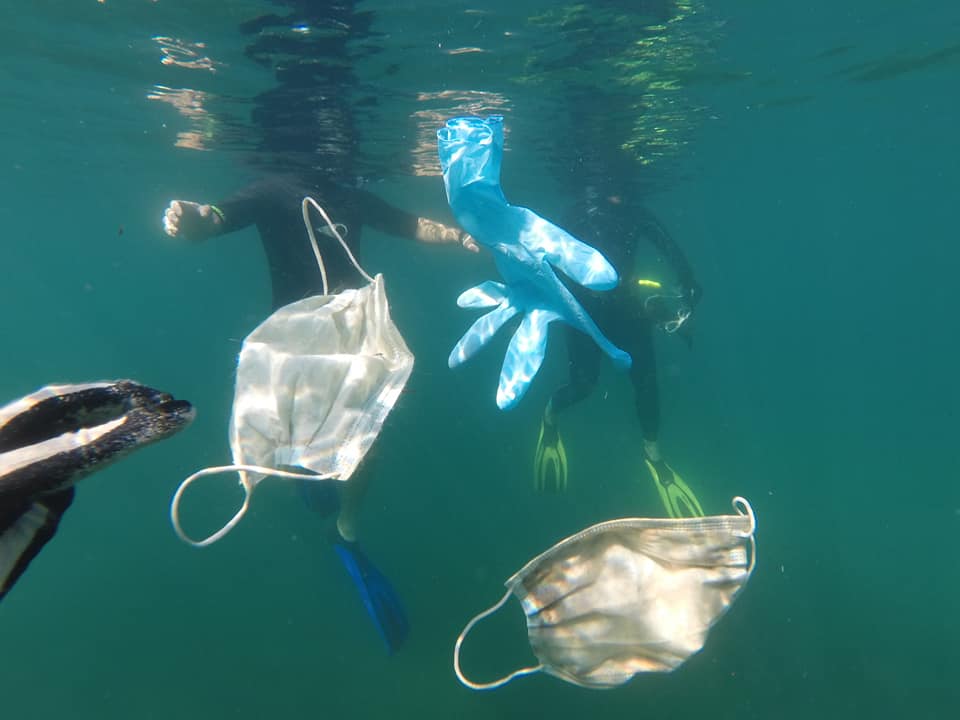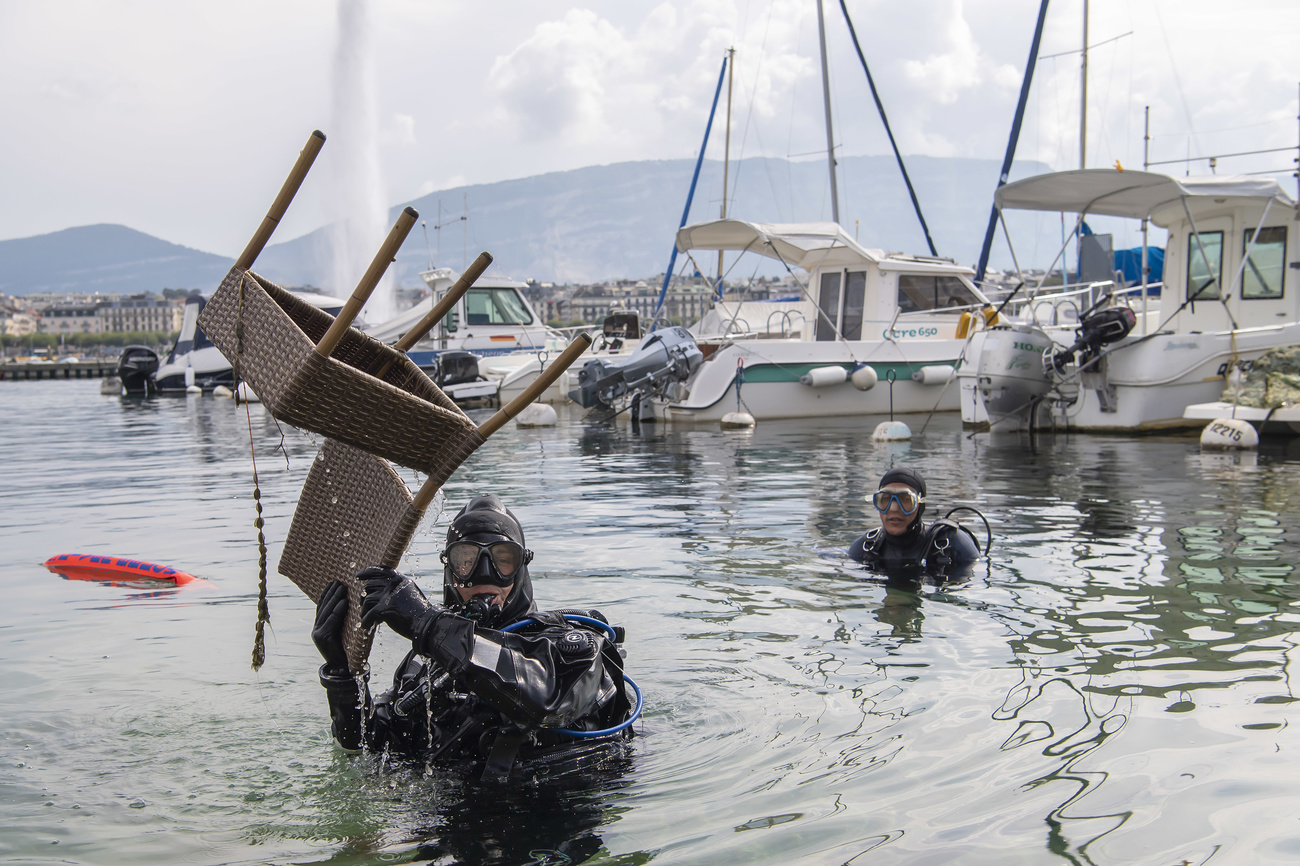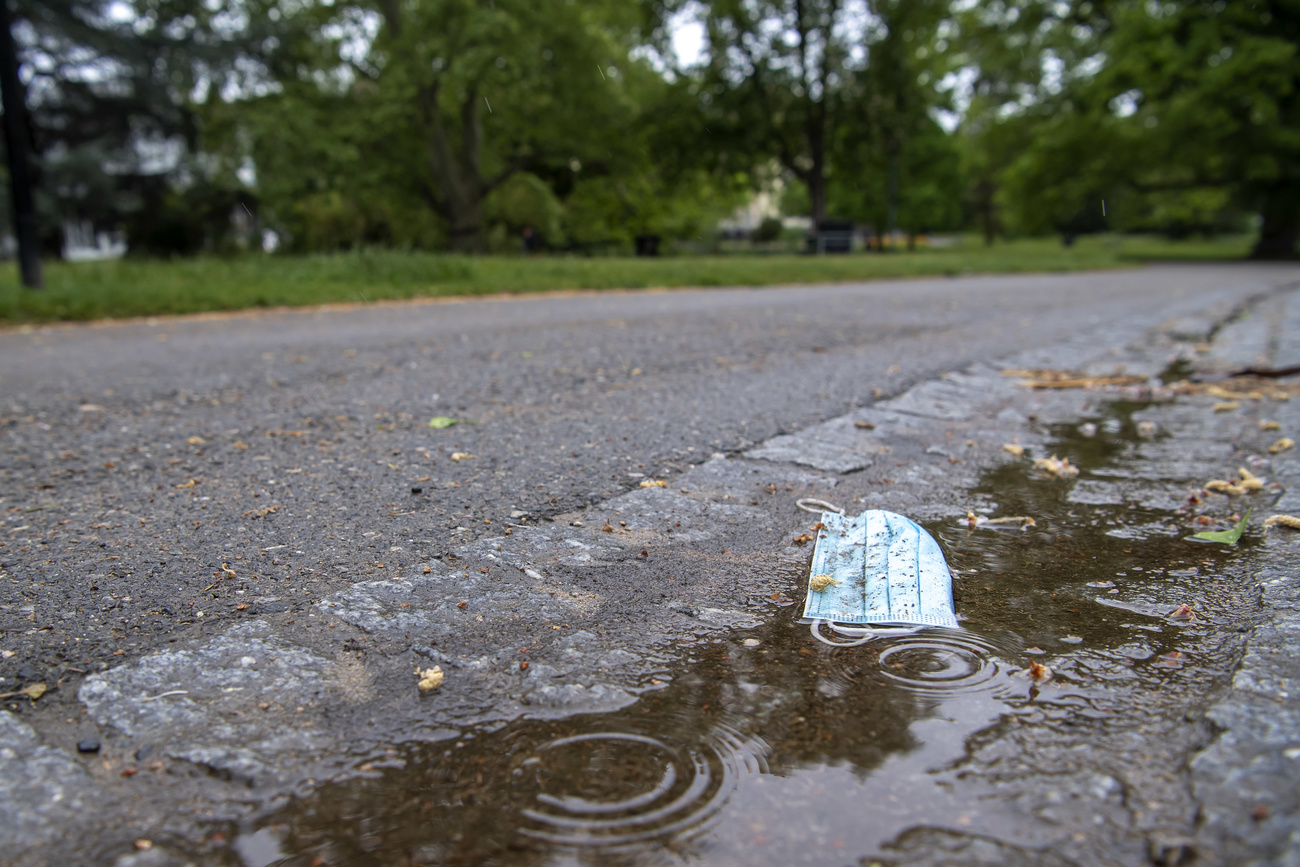What’s being done about mask and glove pollution?

They protect us while we wear them, but what happens to all those masks and gloves after we discard them? As more places make mask-wearing compulsory, we are facing the problem of how to manage a new source of pollution.
Personal protective equipment (PPE) is a new form of waste that is not easy to handle. Take masks, which are made up of three elements – the “fabric” part, the metal strip for pinching on the nose, and the elastic bands. Here lies the first complication, as the different materials cannot be recycled together. What is more, the protective part is not actually made of fabric, but of a plastic called polypropylene. As for the gloves, at best they are made of natural latex; at worst they are also plastic and give rise to the same problems as masks as they decompose.
Visible pollution
Environmental groups have been sounding the alarm for several months now. In February OceansAsiaExternal link published the first shocking pictures of beaches strewn with pandemic-related debris near Hong Kong.
In Europe, teams from Opération mer propre (Operation Clean Sea), founded by diver Laurent Lombard, were the first to find signs of this pollution on the French Mediterranean coast. The association continues to publicize the growing ecological impact of the coronavirus crisis.
Last month, volunteers who turned out to clear rubbish from Lake Geneva for World Cleanup Day collected piles of protective masks. Non-governmental organizations such as Earth.orgExternal link and GreenpeaceExternal link are also trying to draw the authorities’ attention to the problems posed by PPE.

More
Hundreds of face masks fished out of Lake Geneva
Consequences for humans, too
Even before it decomposes, discarded PPE is hazardous to wildlife. Dolphins and sea turtles easily mistake gloves for jellyfish, with fatal consequences if they swallow them. Animals can also become entangled in the elastics of the masks.
Then, as they break down, these objects release plastic microparticles. In the sea, these are swallowed by fish, and finally turn up on our dinner plates. On land, they seep into the groundwater and pass into our drinking water.
In a letter to French President Emmanuel Macron, a member of parliament from France’s Alpes-Maritimes coastal region (next to the Côte d’Azur), Eric Pauget, urged the president to step up efforts to combat PPE pollution: “With a lifespan of 450 years, this gear is a real ecological time bomb, given its lasting environmental consequences for our planet”.
So what are the solutions?
In view of the huge number of masks and gloves being distributed, different players – mainly private – have set about looking for solutions.
Recycling masks is complicated from a logistical point of view; the coronavirus can survive for up to three days on plastics, no appropriate public collection sites are in place, very large amounts are needed, and the masks’ composition based on three different elements further exacerbates the problem. Recycling is therefore costly and few entrepreneurs are willing to take the plunge. Nonetheless, the French company Plaxtil seems to have found a way to recover this waste.
The masks are placed in quarantine, then they are cut up manually before being shredded, disinfected by ultraviolet light and mixed with a binder material. This produces a paste that can be used to make small objects like visors, mask clips and door handles.
Most initiatives, however, are focusing instead on producing biodegradable masks. For instance, a Belgian start-up, CUVCOV, makes reusable masks “of micro-fibre created from recycled materials”, as its website tells us. Each one comes with a biodegradable pouch for storage.
In Switzerland, meanwhile, the fledgling company HMCAREExternal link is taking the lead. A spin-off from the EssentialTech Centre at federal technology institute EPFL in Lausanne, it has designed a protective mask that is 99% made of materials derived from biomass. Called HelloMask, it is transparent and recyclable, and should be available in 2021.

More
Swiss develop first see-through surgical mask
Some people argue that reusable masks are not environmentally neutral, as they must be machine washed at 60°C in order to disinfect them. According to a study by University College LondonExternal link, what makes the difference is how the masks are cleaned. After analysing the overall environmental impact of manufacturing, using and disposing of single-use masks, reusable masks and reusable masks with disposable filters, the team concluded that, over one year, reusable, filterless, machine-washable masks had the lowest impact.
In Switzerland, the Federal Office of Public Health has posted a list of recommended masks on its websiteExternal link. Regarding cloth masks, it stresses that these should bear the “community mask” label, guaranteeing compliance with a number of set criteria.
Since March, the group reMask has been working with the Swiss government’s Covid-19 taskforce. Véronique Michaud, EPFL professor and one of the group’s scientists, says that the environmental aspect was not the initial priority, but that she is confident that the projects currently underway will have an indirect effect on PPE pollution. Specifically, the group is working to extend the durability of surgical and FFP masks.
“This addresses two issues at the same time: the environmental impact and the risk of supply shortages,” Michaud told SWI swissinfo.ch. reMask is also in contact with Swiss textile companies in order to support them in producing cloth masks with the requisite qualities.

What are the Swiss authorities doing?
Whereas the homepages of most European environmental ministries feature links to the action they are taking to tackle pandemic-related waste, the Federal Office for the Environment simply refers viewers to a site where different personalities give their points of view on the environmental opportunities and challenges stemming from the coronavirus crisis. The page contains no recommendations on the environment.
There has also been no assessment in Switzerland of the pollution caused by PPE. The Federal Office for the Environment told SWI swissinfo.ch that it did not “collect figures on waste, as the issue is the responsibility of the cantons, municipalities and cities”. Other bodies, namely the Union of Swiss Cities and the Swiss Association for Municipal Infrastructure, took the same approach, adding that “the issue does not appear as a problem on [our] radar screens”.
More

In compliance with the JTI standards
More: SWI swissinfo.ch certified by the Journalism Trust Initiative












Join the conversation!